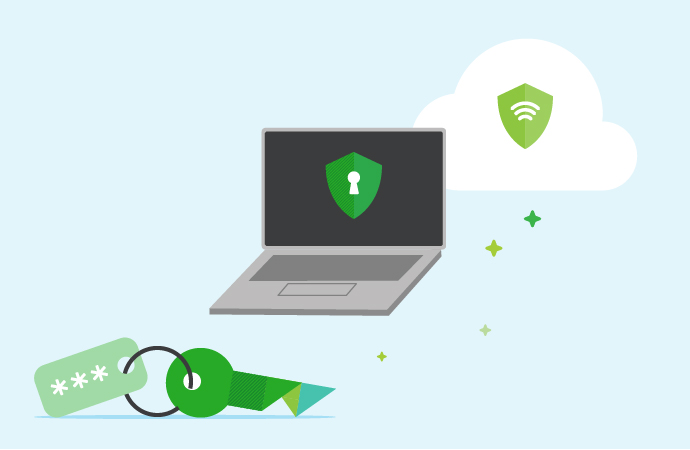Cybersecurity might sound like a relatively recent field, but the history of cybersecurity basically goes all the way back to the 1940s and ‘50s. Almost as long as there have been computers, there’s been computer crime. And as computers and networks became more sophisticated, so too did the crime: from ‘phone phreaks’ in the 1950s to viruses, worms, firewalls, DDoS attacks and zero-trust security, the evolution of cybersecurity has had its twists and turns.
And now, as we stand on the threshold of an uncertain future, where generative AI threatens to overwhelm traditional cyber defenses, it’s worth looking back and asking (to paraphrase Talking Heads): “How did we get here?”
What is cybersecurity?
Cybersecurity is simply the practice of protecting digital systems from compromise or attack. This can involve physical barriers – literally locking the door – and more sophisticated defensive measures. It covers everything from data protection to network security and Identity and Access Management. Of course, in the early days of cyber, both defenses and hacks were pretty rudimentary…

The history of cybersecurity: The beginnings of cybersecurity
Where do you start your cybersecurity timeline? While the first recognizable computers began emerging in the 1940s, it was a good 10 or 20 years before genuine cyberattacks became feasible. There are a couple of reasons for this. One, early computers were incredibly rare, and could weigh up to 30 tons. These machines weren’t networked, so the only way to gain access was through the physical interface.
Still, the concept of cybersecurity was beginning to emerge, even then. Mathematical prodigy, John von Neumann, first theorized about computer programs that could self-replicate back in 1949 – essentially predicting the first computer virus.
The history of cybersecurity: the emergence of phone phreaks
One of the earliest records of widespread cybercrime was the ‘Phone Phreaks’ phenomenon in the 1950s. Phone Phreaks were individuals who engaged in a form of telephone hacking, known as ‘phone breaking. This wasn’t illegal in the ‘50s – the term ‘cybercrime’ hadn’t even been invented yet – but the practice became more widespread in the ‘60s and ‘70s. Users could ‘hack’ analogue phone systems to make free calls, manipulate the network, and generally cause a mess. The ‘Phone Phreaks’ were pretty tame by today’s cybercriminal standards – their objective was disruption, rather than profit.
The history of cybersecurity: the birth of hacking
What we think of as ‘hacking’ really began in the 1960s. You can trace the origins to several places, but one of them was the MIT Tech Model Railroad Club, whose members began experimenting with computers in the late ‘50s and early ‘60s, eventually gaining unauthorized access to a primitive TX-0 computer, one of the first ever installed at MIT. Some members of the club, like Stephen Levy, are credited with coining the term ‘hacking’.
The history of cybersecurity: the transition from ARPANET to Internet
The 1970s was the decade when computer security became serious business. By now, computers were connected to primitive networks, like the Advanced Research Projects Agency Network (ARPNET). They were – by 1940s standards, at least – small, personal…and vulnerable. One of the first computer worms emerged in this decade, designed by an ARPNET developer, Bob Thomas. It was called The Creeper, and it was self-replicating, able to move between computers on the CTSS network.
The history of cybersecurity: the rise of cyber threats
During the 1980s, high-profile hacks became more and more common, with companies like National CSS, AT&T, and even the Los Alamos National Laboratory coming under attack. ‘Trojan Horse’ and ‘Computer Virus’ both made their way into the vernacular, and this is when we started seeing the first commercial anti-virus programs, like John McAfee’s pioneering software, Brain.
In the 1990s, the world went online, and cybercrime exploded exponentially. With new, globe-spanning networks, and a personal computer in every home, the world became incredibly vulnerable to cyber attacks. Worms and viruses proliferated, and anti-virus companies like Norton tried desperately to keep up. Early forms of ransomware, like the AIDS Trojan, also began to emerge. Finally, as networks began to grow in size and complexity, we started to see the first DDoS attacks. Early internet frontrunners like AOL, Yahoo, Amazon and eBay were all targeted.
Modern-day cybersecurity
In the 2000s and 2010s, cybercrime and cybersecurity both leapt forward at astonishing rates. For every new virus, a new anti-virus quickly emerged, driving an industry that, in 2021, was valued at $216 billion. The threat landscape evolved rapidly, with hackers increasingly targeting financial institutions, ecommerce sites and online payment systems, while phishing scams, botnets and email-based attacks also became more common.
Today the cyber industry is poised on the threshold of something new: AI. While generative AI models can help cybersecurity experts predict and adapt to new threats, they can also be exploited to design AI-enhanced malware, adversarial machine learning techniques, and AI-driven deepfakes on a scale we’ve never seen before. The future’s uncertain, although one thing seems clear – the need for robust cybersecurity has never been greater.


